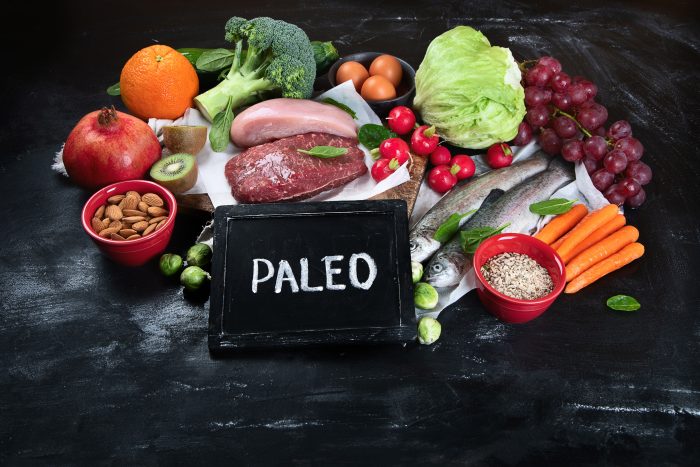
Making dietary changes has proven to help many people with a number of different health issues over the years. In addition to the obvious benefits associated with an improved MS diet such as weight loss and increased energy, certain diets have also been effective at helping people cope with their MS symptoms. One MS diet plan in particular developed by Live Disease Free to specifically help with MS has emerged as the best MS diet option for people suffering from this disease. Below, we will describe the Live Disease Free eating plan and compare it to some other popular Multiple Sclerosis diets to show how it provides the greatest help with MS symptoms.
Why The Live Disease Free MS Diet Plan Is The Best?

For over 30 years, research has shown that chronic disease is caused by infection. The goal of the Live Disease Free MS diet plan is to provide a highly nutritious diet that reduces the food supply to the various infections that cause multiple sclerosis. Common MS symptoms like spasticity, numbness, bladder and digestive issues, and chronic fatigue are just a few of the issues that can improve when following the Live Disease Free multiple sclerosis diet plan. Our health experts have created this diet in order to decrease inflammation experienced by those living with a chronic disease like multiple sclerosis. By eating this way and consuming foods that help MS patients, many symptoms of the disease can also improve within a week or two.
While there are plenty of other MS diets that focus on and modify similar aspects of a person’s eating habits, none of them are able to provide the nutritious low-carb, high fibre balance that is found with the Live Disease Free eating plan.
The Most Common Multiple Sclerosis Diets
Let’s check the most popular multiple sclerosis diet plans out there.
- Swank Diet
- Keto Diet
- Paleo Diet
- Plant Based/ Vegan Diet
- Wahls Protocol
- Autoimmune Protocol
- Why Live Disease Free Offers The Best MS Diet
To help you to pick the best Multiple Sclerosis diet we are going to consider the pros and cons for each in the list.
Swank Diet

One of the first diets created specifically for people suffering from multiple sclerosis is the Swank Diet. This multiple sclerosis meal plan was created by Dr. Roy Swank after completing nearly a decade of research on MS in the 1940s. Dr. Swank found that people living in coastal fishing communities in particular had a reduced risk of getting MS due to their meal plans. This led Dr. Swank to create a multiple sclerosis diet that is focused on limiting fat, especially saturated fat.
Why The Swank Diet Is NOT The Best Diet For Multiple Sclerosis (MS)
Current research shows that a low-fat diet may not actually be the ideal option for people with MS. This is because we have found that the infections which cause disease (fungus, parasites and bacteria) actually thrive on carbohydrates, not fats. The possible benefits from the Swank Diet were more likely due to the elimination of processed foods which would improve health in general, but it doesn’t take into account and target the causes of disease, making it far less effective compared to the Live Disease Free eating plan.
Keto Diet

You have probably heard of the Keto Diet before due to its popularity among the general public in recent years. The Keto Diet is designed to reduce carbohydrate intake while increasing healthy fats. However, can Keto diet prevent multiple sclerosis?
When a person begins a Ketogenic diet, they are doing so with the goal of reaching what is known as ‘Ketosis‘. When a person reaches the point of Ketosis through this diet, their metabolism will switch from burning sugars to burning fat. Positive results associated with this fat burning diet include improved brain function, which can help reduce issues like memory loss and it can be helpful in treating epilepsy. Furthermore, the Keto Diet has shown to be effective at reducing inflammation, which is particularly beneficial for Multiple Sclerosis patients.
Why The Keto Diet Is NOT The Best Diet For Multiple Sclerosis (MS)
There are some drawbacks to the Keto Diet when it comes to MS patients specifically. While there is evidence that this diet can have some positive impacts, there is also the risk of negative effects associated with the Keto Diet which means it not the best multiple sclerosis nutrition. While following the Keto Diet, it is difficult to eat the recommended 9 to 13 servings of low-carb vegetables each day to support nutritional needs. Also, the Keto Diet allows the consumption of dairy products which should be avoided for those who suffer with MS and other chronic diseases, as they can cause symptoms to become worse. There is also the risk of eating too much animal protein at a meal whereby the body can convert the excess protein to sugar and cause blood sugar to rise, which will feed infections. Thus, the Keto is not ideal for multiple sclerosis diet plan and recovery from MS and will have little impact on reducing the progression of the disease.
Paleo Diet

Another diet that has recently grown in popularity is the Paleo Diet, which focuses on eliminating things like gluten and dairy entirely from a person’s diet. Essentially, a Paleo Diet is designed around what a human may have eaten more than 10,000 years ago in the Palaeolithic era. This means the diet is heavily focused on meats, plants, nuts and seeds which could have been hunted or gathered before the invention of farming and might be considered as foods that help MS. For people suffering from Multiple Sclerosis, a dairy free diet is essential, as the sugar protein in dairy is a primary cause of inflammation.
Why The Paleo Diet Is NOT The Best Diet For Multiple Sclerosis (MS)
The rationale behind the Paleo Diet is based on the notion that humans are genetically mismatched to the foods we produce and consume today. Things like grains, dairy products and legumes which are procured using modern farming practices are eliminated entirely from a person’s diet, leaving them less likely to become overweight, or have to deal with issues like heart disease and diabetes in the future. As a result, Paleo is not a good diet for multiple sclerosis patients.
While the low-fat, non-dairy diet may seem ideal, there are other high-carb foods included in the Paleo Diet that should be avoided by people with multiple sclerosis. Starchy vegetables, along with eating too many nuts and seeds can greatly increase the overall carbs we eat each day. Carbohydrates serve to feed infections rather than make them less active, which will lead to more inflammation and therefore more disease symptoms. To sum up, we would not recommend Paleo as your multiple sclerosis diet plan.
Plant Based/ Vegan Diet

In addition to the assumed benefits many health experts and dieticians associate with plant based and vegan diets, some have found ethical reasons to adopt this diet as well. It is no secret that the phenomenon of mass production has left many people feeling uneasy about where and how they get their food. Animals used for the production of meat and dairy products are often subjected to poor living conditions, and the production process has led to major negative environmental issues as well. Is it an effective MS diet plan?
Why A Vegan Diet Is NOT The Best Diet For Multiple Sclerosis
When it comes to anyone’s personal ethics and notion of what they feel is right and wrong, we always remain sensitive while providing the best possible insight and advice for coping with MS. Vegan diet is far from the best diet for Ms patients. If you have a healthy lifestyle and aren’t in the process of recovering from any disease symptoms, a vegan or plant based diet is doable. For those who find themselves in the recovery process however, it is extremely difficult to provide your body with the energy it requires to fight an infection without animal proteins. It is also extremely difficult to maintain a healthy weight without animal protein, as most plant based proteins are high in carbohydrates, which will make symptoms worse and for that reason are not permitted in the Live Disease Free MS meal plan.
Wahls Protocol

In late 2014, Dr. Terry Wahls released a book which detailed her new method of treating chronic autoimmune conditions such as multiple sclerosis through dietary principles. After being diagnosed with MS in 2000, Dr. Wahls began seeking alternative methods of treatment for her disease. Before incorporating her new nutrient-rich diet into her routine, traditional treatments had been mostly ineffective, and Dr. Wahls feared the worst for the future. Fortunately, by 2011, Dr. Wahls was able to drastically reverse many of the symptoms of MS, and she attributes her personal success to the diet protocol she created.
Why The Wahls Protocol Is NOT The Best Diet For Multiple Sclerosis
The Wahls Protocol or Wahls Diet recommends natural foods and many servings of vegetables each day to provide the vitamins, minerals, fatty acids and antioxidants needed to help MS patients improve their health. It is loosely based on the Paleo Diet, which eliminates lots of high-carb foods that are difficult for a person with MS to process. By modifying the Paleo Diet to increase nutrient-rich foods and reduce carbohydrates, the Wahls Protocol has shown to be effective at improving brain function and quality of life in people suffering from MS and other autoimmune conditions.
However, Dr. Wahls focuses on principles of functional medicine such as treating mitochondrial function and methylation defects in the body, rather than on treating the underlying cause of the disease which are chronic infections. The Wahls Protocol allows chocolate, wine, smoothies and sweet potatoes which will all promote the infections that cause MS. The Live Disease Free eating plan omits these things and reduces the total grams of carbs to less than 50 per day which makes infections less active, inflammation decreases and people enjoy significant improvements in their symptoms. This is an important part of recovery as it makes treating the infections easier. While the Wahls Protocol helps people to manage their symptoms, going a little lower with daily grams of carbs in the Live Disease Free eating plan allows our students to have more symptom improvements quicker and more successfully treat the infections.
Autoimmune Protocol

Another relatively new diet focused on helping people cope with autoimmune issues is known as the Autoimmune Protocol, or AIP diet. Like most of these diets, the goal behind the AIP diet is to reduce inflammation by eliminating processed foods, eggs, nuts and seeds, night shades, grains, legumes, dairy, and some vegetable oils from a person’s diet. It does allow sweeteners such as honey, maple syrup, date sugar, coconut sugar and others which will feed the infections that cause all chronic disease. For the most part, the Autoimmune Protocol is restricted to meats and certain vegetables, making it very similar to the Paleo Diet, as well as the Wahls Protocol described above, though some say it is the most restrictive of the three diets.
Why The Autoimmune Protocol Is NOT The Best Diet For Multiple Sclerosis (MS)
In addition to the Paleo inspired diet, the Autoimmune Protocol places an emphasis on other healthy practices such as proper sleep, stress management and mindfulness, and regular physical activity (when possible). This universal approach to diet and a healthy lifestyle has led to some success at reducing symptoms for people suffering from a wide range of autoimmune conditions. So far however, there is no direct evidence stating that this protocol is ideal for MS patients. Plenty of researchers praise the diet for general health improvement, but currently there is no scientific evidence that links the Autoimmune Protocol to a reduction in symptoms associated with multiple sclerosis and other autoimmune disorders.
Why The Live Disease Free Eating Plan Is The Best Multiple Sclerosis (MS) Diet
The short answer to why you should choose the Live Disease Free MS diet plan is that it is far more effective than any other multiple sclerosis diet, protocol or eating plan in reducing MS symptoms. The Live Disease Free MS meal plan is the best diet for MS because it is the only one that addresses the root cause of disease, which is infection. Following a low-carb, highly nutritious eating plan is the first step to recover from parasitic and bacterial infections that cause disease.
The Live Disease Free MS eating plan is primarily focused on feeding the body with a lot of nutrition while decreasing food to the infections that cause disease, making them less active and easier to treat. This results in a decrease in inflammation and wonderful symptom improvements from just diet alone. By targeting inflammation in particular, this eating plan provides effective relief for those who suffer from autoimmune disorders like Multiple Sclerosis. While some of the other diets mentioned above can provide some symptom relief, the Live Disease Free MS diet will offer the most symptom improvements and will best prepare people to treat the infections that are the root cause of the disease.
The Live Disease Free diet for MS sufferers emphasizes 9 to 13 servings of low-carb, low starch vegetables, moderate protein, and enough healthy fats to maintain weight. It is grain free, dairy free, and does not allow processed carbs, sugar or other sweeteners, caffeine or alcohol. Keeping our daily carb count higher than Keto but lower than Paleo drastically weakens the infection, but it is not enough for you to fully get well. Once you begin to starve the infections it is important to treat them with therapies (in conjunction with your health care professional) and then also look for disease contributing factors in your environment that need to be removed.
For more information about how the Live Disease Free MS diet plan can help improve your quality of life as the first step to recovery from multiple sclerosis, please feel free to get in touch with any questions. Or, if you are ready to get started, be sure to contact us via our website today! We look forward to hearing from you, and helping you achieve your health and lifestyle goals for the future.

Clinically diagnosed with multiple sclerosis at the age of 28, Pam chose an alternative approach to recovery. Now decades later and still symptom free, she coaches others on how to treat the root cause of chronic disease, using a holistic approach. She can teach you how, too.
Pam is the author of Become a Wellness Champion and founder of Live Disease Free. She is a wellness expert, coach and speaker.
The Live Disease Free Academy has helped hundreds of Wellness Champions in over 15 countries take charge of their health and experience profound improvements in their life.

